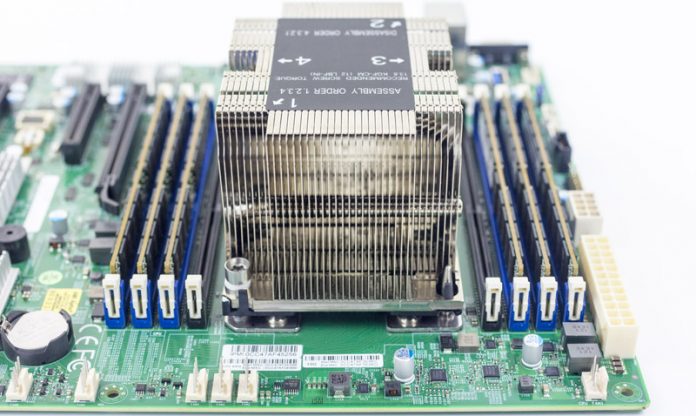The Intel Xeon Gold 6132 is our benchmark and review focus for this article. Sitting in the lower-mid part of the Intel Xeon Gold 6100 series provides a solid upgrade path over the Intel Xeon Gold 5119T with higher clock speeds. As you are going to see, this is a solid option combining higher-end clock speeds with a solid 14 core count. We are going to focus on single CPU performance for this review.
At STH, we have been on a mission to benchmark every Intel Xeon Scalable and AMD EPYC CPU single and dual socket configuration. We now have over 55% coverage of all single and dual socket combinations. That gives us a lot of comparison data for our Intel Xeon Gold 6132 benchmarks and review. We publish a subset of our results publicly on STH which provide a good relative sense of how fast the different CPU options. Our goal is to give our readers a sense of what they get moving the processor selection slider up or down when spec’ing servers. We are also going to provide some thoughts around where this SKU fits in the market.
Key stats for the Intel Xeon Gold 6132: 14 cores / 28 threads, 2.6GHz base and 3.7GHz turbo with 19.25MB L3 cache. The CPU features a 140W TDP. At around $2100 this is starting to get to the level where lower-end dual socket servers can provide some competition. Here is the ARK page with the feature set.
Test Configuration
Here is our basic test configuration for single-socket Xeon Scalable systems:
- Motherboard: Supermicro X11SPH-nCTF
- CPU: Intel Xeon Gold 6132
- RAM: 6x 16GB DDR4-2666 RDIMMs (Micron)
- SSD: Intel DC S3710 400GB
- SATADOM: Supermicro 32GB SATADOM
One of the key advantages the Intel Xeon Gold series has is the ability to use up to 12 RDIMMs per socket and run them at DDR4-2666 MHz. Also, if you have an application that can utilize AVX-512, there is a major step up from the Intel Xeon Gold 5100 series in terms of performance beyond the RAM speed jump.
Next, we are going to show our benchmark data then give some sense of where the chip falls in the overall SKU stack.





When you want some real speed with NAMD, Gromacs etc.. the GPU way is a lot faster and cheaper.
AVX512 is dead on arrival.
https://www.pugetsystems.com/labs/hpc/NAMD-Performance-on-Xeon-Scalable-8180-and-8-GTX-1080Ti-GPUs-1124/
@Misha Do remember that if you can’t use GeForce GPUs, professional GPUs cost as much as or more than two high-end CPUs, will consume equal amount of power, and will often end up as a bottleneck for strong-scaling. For NAMD AVX512 may not be worth it, but NAMD does not have tuned AVX512 SIMD kernels.
However, in GROMACS we have i) redesigned the algorithms from ground-up for wide-SIMD architectures (rather than shoehorning old algorithms into wide SIMD units) ii) implemented and tuned SIMD code (note that tuning here means *both* choosing the right algorithm parameters and the right SIMD intrinsics) for a dozen+ SIMD architectures which makes our code very efficient. While GPUs will win in non-scaling runs, in strong-scaling use-cases CPU nodes are still very strong and if you consider the cost of a simulation on Tesla rather than GeForce, the advantage of GPUs will not be huge.